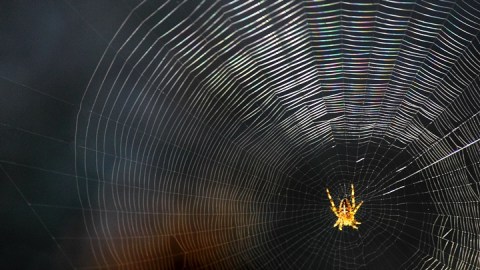How the Almost-Blind Spider Sees the World By Playing Its Web

Armed with a sense of pitch at least as advanced as our finest musicians, it turns out that spiders masterfully tune and re-tune their webs as a way of using it to “hear” the world around them.
Scientists got their first inklings of this when Oxford University’s Silk Grouprevealed in 2014 their finding that spiders tune the frequency at which their silk strands vibrate. Now a new study jointly released by Oxford and Universidad Carlos III de Madrid confirms the incredible complexity and sophistication of spiders’ tuning capabilities.
Spiders are nearly blind, and sensors in their legs feel vibrations conveyed by the fibers from which their webs are spun. We’ve long understood that they can trace the vibrations back to prey ensured in their webs.
But that now seems to be just the beginning, and the way a strand vibrates apparently conveys other information as well. A strand’s pitch is determined by its thickness, length, and tension, or how tightly it’s being pulled — just like the strings of a guitar, for example — and the Silk Group found that spiders can control these attributes. Oxford lecturer Beth Mortimer told NPR, ”The spider can actually pluck or bounce the silk strings, and it can monitor the echoes that come back so it can locate objects.”
The new study benefits from the interdisciplinary background of the team that produced it. Silk was measured in the lab using high-powered lasers to pick up the most infinitesimal vibrations. That data then served as the basis of computer models that allowed researchers to experiment with virtual silks. They examined the types of subtle modifications to the silks that spiders produce, and simulated various observed spider behaviors to understand their effect on the silk’s vibrations. The conclude that, in addition to tuning, the spiders interact with the silk by touching it in certain ways to affect how it “rings.”
Researchers began to see the hyper-sensitive web as an instrument the spider plays — and carefully “listens” to — to make sense of its world. The “music” produced by the web tells the spider about much more than its upcoming meals. It tips it off to the movements of an approaching predator, and it may even provide the spider a first “look” at a prospective mate.
Here’s a great video NPR made when the Oxford Silk Group’s 2014 report came out.





